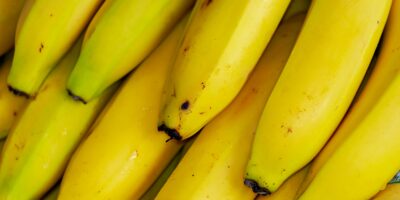On November 2, 2016, NASA Administrator Charles Bolden made an exciting announcement: the construction of the James Webb Space Telescope (JWST) is complete. If it is successfully launched—current plans are for October 2018—this NASA-lead joint American, European, and Canadian venture will be by far the largest space telescope humans have ever created.
The JWST is a project that is 20 years in the making, and one that almost didn’t get made at all. It was initially planned for launch in 2014 at a cost of $5 billion. However, cost overruns and delays caused the US House Appropriations, which oversees NASA’s budget, to strongly consider cancelling the entire project in 2012. The combined work of many scientists and space enthusiasts managed to save the telescope, moving the launch date to 2018 and increasing the budget to $8.7 billion.
JWST is set to make amazing discoveries. In some ways, it is the successor to the spectacular Hubble Space Telescope. But in many ways, it is much more. For one thing, JWST will have a primary mirror that is 25 meters squared, seven times larger than Hubble’s. For another, JWST will focus on observing the infrared spectrum of light instead of Hubble’s ultra-violet/visible spectrum. This will allow it to make observations that simply cannot be done on Earth, with its infamously thermal-radiation-capturing warm atmosphere. Finally, JWST may be able to take images of the start of the formation of galaxies in the early universe and directly image large exoplanets around nearby stars.
With such an impressive list of expectations for JWST, it should not be surprising to learn that the spacecraft is an incredibly sensitive instrument. Every part of the craft—the mirror itself, the gigantic sunshield, and even the telescope’s orbit—have been designed to give the sharpest, most sensitive images possible.
The mirror is made of beryllium coated with gold. It comes in 18 hexagonal-shaped pieces because, simply put, the mirror could not fit in its rocket any other way. JWST will be launched in an Ariane 5 rocket, which has a palsy 4.57 x 16.19 m shroud. Once in space, the 6.5 m-diameter mirror unfolds. Just testing the mirrors’ stability requires advances in interferometry; the designers need to know that the mirrors will not distort or shift during launch, so they used an interferometer to find the centre of curvature of the mirror before the rigorous flight-simulation tests. Once the testing is complete, the test can be performed again and the results of the two tests can be compared. However, the nanometre sensitivity required is so precise that slight vibrations caused by benign sources such as people talking can throw off the readings. To combat this, a special interferometer that samples at 5000 Hz—faster than the obfuscating vibrations—was developed.
The sunshield represents a second painstaking effort to keep disturbances down. Since JWST is an infrared telescope, its readings can be disturbed by its own heat. To combat this, a multi-layer tennis court-sized sunshield is installed on the back of JWST. With this shield, it is hoped to keep the temperature of the telescope at 50 K. Even the heat generation from milliwatt-consuming electrical components on the far side of the sunshield was taken into consideration.
In the same vein of producing the crispest images possible, JWST is placed into a very particular solar orbit near the Sun-Earth Lagrange 2 (L2) points. This is one of five special “Lagrange Points” between any two large orbital bodies. Generally, the orbital period of an object increases with the increasing radius of the orbit. However, at these special points the combined gravity of the Sun and Earth (or any other two bodies) causes the small body to orbit at the same speed as the other two objects orbit each other. In the case of JWST, it will be located beyond the Moon, with the Earth and Moon between itself and the Sun. It will perform an 800 000 km “halo orbit” around L2 so that it the Moon or Earth will never eclipse the sun, causing the satellite to lose power.
The advantage of the L2 halo orbit is that JWST’s sunshield will block the Earth and Moon in addition to the Sun, eliminating another source of disturbance from the telescope. Additionally, because the spacecraft will be in constant and consistent sunlight, it will not have to contend with repeated thermal changes that would occur in a near-Earth orbit where the Sun would be eclipsed once per orbit. The disadvantage is that orbits around L2 are unstable; JWST will need to use 2-4 m/s of delta-V each year to maintain its orbit, with an expected total budget of 150 m/s.
When JWST begins taking pictures in 2019, it will find amazing new things. Certainly, it will be able to answer the interesting questions that it was sent to do: What do early galaxies look like? What do exoplanets look like? The expectation, however, is that JWST will make many unexpected observations for which there is no explanation. When it does, astronomers will gleefully throw themselves at the problem, probably solving quite a few of these new mysteries. For the mysteries that they cannot solve? Well, NASA has already announced new funding to research the creation of a picometre interferometer in anticipation of the telescope that will eventually dwarf JWST.




Leave a Reply